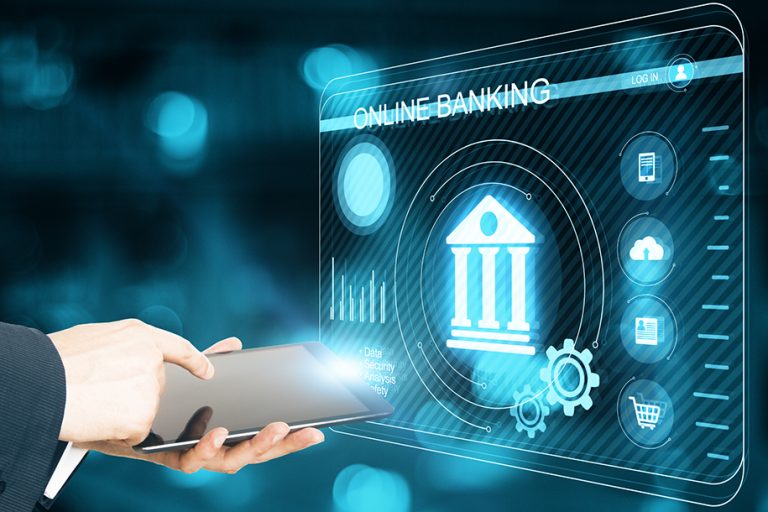With online shopping now ingrained in global consumer behavior, e-commerce platforms have become a prime target for cybercriminals. As digital storefronts grow in size and complexity, they collect increasing volumes of sensitive data—such as payment card details, personal information, and transaction histories. If these systems are compromised, the repercussions can be severe, ranging from financial losses to irrevocable damage to brand reputation.
Understanding the current threat landscape, putting in place a robust cybersecurity framework, and proactively mitigating the most prevalent cyberattacks are all critical steps toward safeguarding e-commerce operations. Moreover, specialized products such as Enqura Fintech Five can offer a tailored approach to ensuring continuous protection, allowing businesses to focus on growth rather than constantly worrying about potential security breaches.
The Cyber Threat Landscape in E-Commerce
E-commerce has witnessed exponential growth over the past decade, propelled by global digitalization and consumer demand for convenience. However, this boom has also drawn the attention of sophisticated cybercriminals. Online marketplaces, subscription-based services, and digital wallet solutions present attackers with a treasure trove of data and potential vulnerabilities.
A Shift Toward Organized Cybercrime
Cyberattacks on e-commerce platforms are no longer the work of lone hackers. Instead, organized cybercrime syndicates combine various tactics—ranging from phishing emails to advanced malware—to penetrate online stores. These groups target everything from smaller niche brands to the biggest global marketplaces. Often, they leverage the same vulnerabilities at scale, exploiting unpatched software, weak or reused credentials, or poor security configurations.
Regulatory Pressure and Customer Expectations
On top of contending with malicious actors, e-commerce businesses must also navigate increasingly stringent regulations. Laws such as the General Data Protection Regulation (GDPR) in Europe set high expectations for data protection and privacy. Failure to protect sensitive customer information can result in substantial fines and negative publicity. Furthermore, customers themselves expect brands to maintain a secure environment. Breaches can quickly erode consumer trust, leading to lost sales and a tarnished reputation that can take years to rebuild.
The Proliferation of Remote Workforce
The rise of remote work has introduced new security challenges in the e-commerce sector. Staff members often access backend systems from various locations and networks, expanding the potential attack surface. Without appropriate security protocols—such as virtual private networks (VPNs), strong authentication, and device management—remote connections can open the door to unauthorized intrusions.

A Robust Cybersecurity Framework
Building a robust cybersecurity framework begins with a risk-based approach, where organizations first identify their primary assets and greatest vulnerabilities. From there, e-commerce businesses can implement tools and policies that address these risks holistically.
Risk Assessment and Threat Modeling
The cornerstone of any reliable framework is a thorough risk assessment. This involves reviewing system architectures, identifying entry points (e.g., login pages, payment gateways), and classifying potential threats. Threat modeling helps visualize how an attacker might move through a network—enabling security teams to plug gaps or strengthen weak spots before they can be exploited.
Layered Security
A layered security approach, often referred to as defense in depth, ensures no single vulnerability will expose the entire system. This includes:
Network and Perimeter Security: Firewalls, intrusion detection systems (IDS), and intrusion prevention systems (IPS).
Application Security: Regular code reviews, secure coding practices, and vulnerability scanning (e.g., OWASP Top 10 checks).
Access Controls: Identity and Access Management (IAM) solutions that enforce the principle of least privilege.
Encryption: Transport Layer Security (TLS) for data in transit and robust encryption standards for data at rest.
Security Awareness and Training
Human error remains a leading cause of data breaches, making staff education a critical component of a robust framework. Employees should receive ongoing training on how to recognize and respond to phishing attempts, password hygiene best practices, and secure handling of customer data. A well-informed workforce can serve as the first line of defense against everyday threats.
Continuous Monitoring and Incident Response
Even the most secure systems can be breached under the right conditions. Therefore, continuous monitoring of logs, network traffic, and system behaviors is critical. Employing Security Information and Event Management (SIEM) solutions can help identify unusual patterns and contain threats before they become severe incidents. Additionally, having a documented and tested incident response plan allows organizations to react quickly and minimize the impact of a breach.

Top Cybersecurity Attacks
E-commerce businesses face a wide range of attacks. Below are some of the most prevalent tactics cybercriminals use to target online stores:
SQL Injection
Attackers manipulate input fields (like search bars or login forms) to insert malicious SQL queries. By exploiting insecure coding practices, criminals can gain unauthorized access to databases and exfiltrate sensitive information such as user credentials or payment details.
Cross-Site Scripting (XSS)
XSS vulnerabilities allow attackers to inject malicious scripts into webpages. When unsuspecting users visit the compromised page, these scripts can capture login credentials, session cookies, or other personal data. The main risk stems from insufficient validation or sanitization of user-generated content.
DDoS Attacks
Distributed Denial of Service (DDoS) attacks flood e-commerce websites with fake traffic, overloading servers and making the site inaccessible to legitimate customers. During the chaos, attackers might also launch secondary attacks (e.g., data theft) or demand ransom payments to stop the assault.
Phishing and Social Engineering
By masquerading as trusted entities—such as popular payment services—cybercriminals trick employees or customers into revealing login credentials or financial information. These attacks often rely on manipulated emails, text messages, or phone calls, emphasizing the importance of user education.
Credential Stuffing
Using lists of stolen usernames and passwords (often sourced from data breaches), attackers systematically attempt to log in to user accounts on different e-commerce sites. Because many users reuse credentials across platforms, credential stuffing can be alarmingly successful if businesses lack countermeasures like multi-factor authentication or rate-limiting mechanisms.
Magecart and Digital Skimming
Cybercriminal groups known collectively as Magecart embed malicious code into checkout pages. This code skims payment card data in real-time as customers make purchases. These attacks can remain hidden for weeks or months if organizations do not monitor their code integrity regularly.
Man-in-the-Middle (MitM) Attacks
In unsecured networks or poorly configured web sessions, attackers can intercept the communication between a user and a website. By doing so, they may capture login details or payment information. Encrypted connections (HTTPS) are essential to thwart MitM attacks.

Cybersecurity attacks targeting e-commerce are diverse, sophisticated, and continually evolving. From large-scale DDoS assaults to hidden Magecart skimmers, attackers are constantly seeking new ways to exploit vulnerabilities. In this high-stakes environment, e-commerce businesses must adopt a layered approach to security—starting with a thorough risk assessment, prioritizing staff education, and leveraging advanced solutions like Enqura Fintech Five.
A robust cybersecurity framework includes continuous monitoring, incident response planning, and strong authentication measures that adapt to emerging threats. By proactively defending against the top attack vectors and staying ahead of criminal tactics, online retailers can protect their customers’ data, maintain business continuity, and preserve their hard-earned trust.
By leveraging AI-driven, high-tech products, e-commerce businesses in industries such as financial services, insurance, and crypto can enhance security, prevent fraud, and build long-term customer trust.
With Enqura Fintech Five, you can strengthen security while enhancing the customer experience. EnQualify‘s AI-driven identity verification solutions ensure secure customer experience, fraud prevention, and regulatory compliance. EnSecure‘s strong multi-factor authentication safeguards transactions and prevents fraud.
In an increasingly digital world, discover Enqura’s AI-driven cutting-edge products to achieve enhanced security, seamless customer experiences, and long-term business growth.



